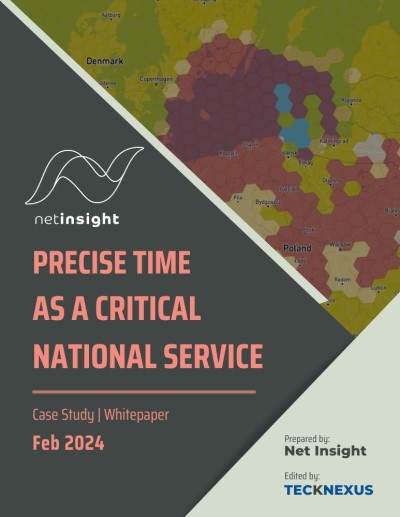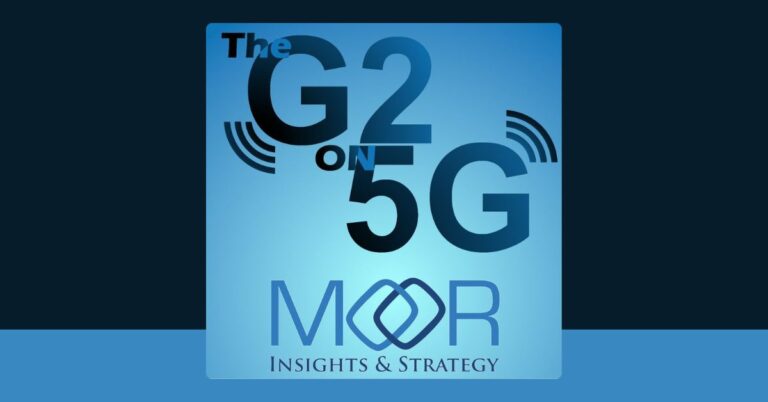Private Wireless Networks | Pros and Cons
Understanding the nuances of private wireless networks is crucial in the era of rapid digital transformation. These networks are becoming a preferred choice for many organizations due to their benefits such as increased control, security, and customized network configuration. But as with any technology, private wireless networks come with their share of challenges. In this blog, we’ll dive deep into the pros and cons of private wireless networks.
Understanding Private Wireless Networks
Before jumping into the pros and cons, let’s quickly recap what private wireless networks are. These networks are standalone infrastructures built for specific users or groups. They offer robust and secure wireless communication, giving organizations full control over their network data. As opposed to public networks, private wireless networks are configured, deployed, and managed by the organization, enabling customization based on unique needs.
The Pros of Private Wireless Networks
Enhanced Security
One of the major advantages of private wireless networks is the enhanced level of security they provide. As these networks are separate from public ones, the chances of data breaches and cyberattacks significantly reduce. Organizations have full control over their network’s security protocols, reducing external threats and enhancing data protection.
Greater Control
With a private network, businesses have complete control over their network infrastructure. This control allows for the tailoring of network configuration based on specific needs, including factors like bandwidth allocation, network slicing for different operations, and prioritization of critical applications.
Improved Network Performance
Private networks offer robust performance and reliability compared to their public counterparts. The quality of service is higher due to dedicated resources, and the chances of network congestion are minimal as the network is only utilized by a specific group or organization.
Customizable Coverage
Private networks allow for customizable network coverage. They can be designed to cover specific areas such as a factory floor, a specific building, or a campus, ensuring optimal performance in these areas.
The Cons of Private Wireless Networks
While the benefits of private wireless networks are compelling, it’s essential to consider the challenges that come with them.
High Initial Costs
The setup of a private wireless network involves considerable initial costs. These include the cost of procuring the necessary hardware, software, and spectrum, along with the cost of network design and implementation. Depending on the scale, these costs might be high for some organizations.
Need for Expertise
Private networks require expertise to deploy and manage. Organizations need skilled network engineers to handle network planning, installation, operation, and troubleshooting. This need for in-house expertise can be a hurdle, particularly for smaller businesses.
Maintenance and Upgrades
Maintaining a private wireless network and ensuring it stays up-to-date with the latest technology can be challenging. These networks require regular maintenance, and updates or upgrades may result in additional costs and potential downtime.
Regulatory Challenges
In some regions, there could be regulatory challenges related to the use of spectrum for private networks. While regulatory bodies are progressively accommodating these networks, there might still be some hurdles to cross in certain jurisdictions.
What Essential Strategies Should Enterprises Implement When Selecting Connectivity Technologies?
When discussing enterprises’ connectivity needs, several fundamental requirements that support the diverse, dynamic, and demanding nature of modern business operations must be addressed.
- Reliable Connectivity Strategy: Continue leveraging existing connectivity frameworks while assessing areas where private LTE/5G can enhance reliability. Plan for incremental upgrades that replace or augment less dependable segments of the network, ensuring minimal disruption to operations.
- Scalable Connectivity Strategy: Evaluate the scalability of current technologies and identify use cases where private LTE/5G could offer significant improvements. Introduce private LTE/5G gradually in high-growth areas or where existing solutions fail to scale efficiently.
- Flexible Connectivity Strategy: Maintain flexibility by integrating private LTE/5G into the connectivity mix where it can offer superior adaptability, such as in dynamic environments or areas requiring rapid deployment capabilities. Transition should be modular, adapting to the shifting needs of the business.
- Security Strategy for Connectivity: Strengthen security by layering private LTE/5G into the existing network infrastructure. This approach enhances security for mobile and IoT devices that require stringent data protection, integrating smoothly with established protocols and expanding protection as LTE/5G coverage grows.
- High-Performance Connectivity Strategy: Gradually introduce private LTE/5G for applications demanding higher bandwidth and lower latency. Start by targeting specific applications that will benefit most from 5G capabilities, such as real-time analytics or machine-to-machine communications, to maximize impact without extensive initial investment.
- Resilience Strategy in Connectivity: Enhance network resilience by adding private LTE/5G as a redundant layer to critical network segments. This phased addition helps ensure continuity and service reliability, providing fallback options where traditional connectivity methods might falter.
- Cost-Effective Connectivity Strategy: Plan the integration of private LTE/5G based on a careful cost-benefit analysis, prioritizing areas with the highest return on investment. This strategic approach ensures that expenditures on new technologies are justified by tangible improvements in performance and operational efficiencies.
Addressing these connectivity needs effectively requires careful planning, implementation, and management of the network infrastructure. Enterprises should consider these factors comprehensively to ensure their network supports current and future business activities efficiently and securely.
The Bottom Line
Private wireless networks offer a host of advantages, including enhanced security, control, performance, and customizable coverage. However, they also present challenges such as high initial costs, the need for expertise, ongoing maintenance, and potential regulatory hurdles.
Understanding these pros and cons will help organizations make an informed decision about whether or not a private wireless network is the right fit for their specific needs. Ultimately, the decision should be based on an organization’s unique requirements, resources, and strategic objectives.
Public Wireless Networks | Pros and Cons
As the world becomes increasingly digitized, the need for effective and efficient wireless connectivity has never been greater. Public wireless networks, which many of us use daily for our smartphones and other devices, play a crucial role in this connectivity ecosystem. However, like any technology, public networks have their benefits and limitations.
Understanding Public Wireless Networks
Public wireless networks are open-access networks provided by telecommunications companies. Unlike private networks, which are exclusively for specific users or organizations, public networks are available for anyone to use, often for a fee. These networks include the 4G and 5G networks that power our mobile devices, as well as public Wi-Fi networks found in cafes, airports, and other locations.
The Pros of Public Wireless Networks
Wide Availability
One of the primary advantages of public wireless networks is their broad coverage. Whether it’s cellular networks that cover large geographical areas or public Wi-Fi networks available in specific locations, users have access to the internet in a variety of places.
Cost-Effectiveness
Using public networks can be cost-effective for individual users and small businesses. It eliminates the need for investing in and maintaining private network infrastructure, as these responsibilities fall on the network provider.
Ease of Access
Public wireless networks offer ease of access. Users can connect to these networks using various devices like smartphones, tablets, or laptops without needing any special equipment or technical expertise.
The Cons of Public Wireless Networks
While public wireless networks are widely used, they also have some notable downsides.
Security Risks
One of the biggest concerns with public networks is the potential for security risks. As these networks are open to all, they are more susceptible to cyber-attacks and data breaches. Users have less control over security protocols, which can leave sensitive data exposed.
Limited Control
Users have limited control over network configurations and resources in public networks. Aspects like bandwidth allocation, network speed, and quality of service are usually managed by the network provider and may vary based on network congestion and other factors.
Variability in Network Performance
Network performance in public networks can be inconsistent. Factors such as the number of users, location, and interference can influence network speed and reliability. In crowded areas or at peak times, users may experience slower speeds and connection drops.
Limited Customization
Public networks offer limited customization options. Unlike private networks, where services can be tailored to meet specific needs, public networks have a one-size-fits-all approach, which may not be suitable for all applications or users.
The Bottom Line
Public wireless networks offer wide availability, cost-effectiveness, and ease of access. However, they also come with potential security risks, limited user control, variability in network performance, and limited customization. Understanding these advantages and disadvantages can help users make informed decisions about when to use public networks and when other options might be more appropriate.
Table: Private vs. Public Wireless Networks: Pros and Cons
|
Private Wireless Networks |
Public Wireless Networks |
| Pros |
|
|
| Security |
High: Dedicated infrastructure and customizable security protocols allow for a secure environment for sensitive data. |
Low: Open to all users, making them more susceptible to cyber-attacks and data breaches. |
| Control |
High: Complete control over network configuration, bandwidth allocation, and quality of service. |
Low: Users have limited control, with most management aspects handled by the network provider. |
| Customization |
High: Network services can be tailored to meet specific business needs and application requirements. |
Low: Offer a standard set of services with limited customization options. |
| Network Performance |
Consistent: Network performance is predictable and can be optimized based on user needs. |
Variable: Performance can vary depending on location, number of users, and network congestion. |
| Cons |
|
|
| Initial Cost |
High: Requires investment in dedicated infrastructure and management. |
Low: Eliminates the need for users to invest in network infrastructure. |
| Maintenance Effort |
High: Requires effort for setup, management, and troubleshooting. |
Low: Maintenance is the responsibility of the network provider. |
| Coverage |
Limited: Coverage is typically limited to a specific geographical area or a particular venue. |
Wide: Cellular networks cover large geographical areas, and public Wi-Fi networks are available in many locations. |
| Ease of Deployment |
Complex: Requires careful planning and technical expertise to deploy. |
Simple: Users can easily connect using common devices without any special setup. |
Emerging Trends and Future Developments
Below are the emerging trends to be considered when deciding on Private vs. Public Wireless Networks:
Integration with IoT: Both private and public wireless networks are increasingly integrating with the Internet of Things (IoT). This integration can impact network performance, security, and application-specific needs.
Role of AI and ML in Networks: The use of Artificial Intelligence (AI) and Machine Learning (ML) in optimizing network performance and security could be a game-changer. This could impact the maintenance efforts and security protocols of both types of networks.
5G Advancements: The ongoing evolution of 5G technology will significantly impact both private and public wireless networks in terms of speed, latency, and connectivity capabilities.
Use-Case Scenarios: Presenting real-world scenarios where each type of network is preferable can help readers understand practical applications. For example, private networks might be ideal for healthcare settings for patient data security, while public networks are more suitable for general consumer internet access.
Comparative Table: Advanced Aspects of Private vs. Public Wireless Networks
| Aspect |
Private Wireless Networks |
Public Wireless Networks |
Notes on Future Trends and Innovations |
| Regulatory Compliance |
Subject to specific industry regulations |
Governed by broader telecom laws |
Emerging technologies may lead to new regulations |
| Energy Efficiency |
Can be optimized for lower energy consumption |
Large scale may lead to higher energy use |
Green technology is a growing focus area |
| Scalability |
Highly scalable within organizational limits |
Naturally scalable to large populations |
Both network types are adapting to rapidly changing tech |
| Innovation Potential |
High in specific sectors (e.g., Industry 4.0) |
Broad-based, impacting general consumer services |
5G and IoT are key drivers of innovation |
| Use Cases |
Ideal for sensitive, industry-specific applications |
Suited for general consumer and broad access needs |
Success stories provide practical insights |



























































